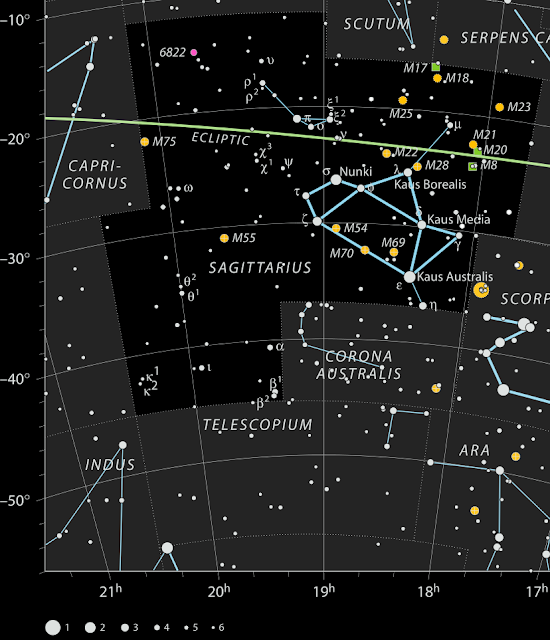Observer's Handbook
Further casting on the web brought up the Canadian Observer's Handbook for 1989. Kind of humbling, that a country with less than 30 million people in 1989 could sponsor and publish something like this. The OH DOES cover the outer planets (including Pluto)! The handbook is still being published!
Here is the main Neptune graphic included in the OH (The Neptune symbol is a Trident, celebrating Neptune, the Roman god of the sea.) Since Neptune orbits the Sun in 165 years, I expect Neptune to travel about 2 degrees in one year, with Earth's orbit making the Neptune plot describe a retrograde backtracking on top of the net travel. Neptune and Earth both follow the general solar system trend of revolving in the ecliptic plane, so the apparent Neptune sky travel all stays near a line (on the upper right, you can see how Pluto, which does deviate from the ecliptic, has a spiral effect imposed on its travel.)
RLB did all these drawings by hand, for every year! - you can tell he was born to astrogate. When you compare his first drawing with the Sagittarius sky chart, you can see the 'Teapot' stars stand out near the Saturn/Uranus/Neptune cluster.
BTW, Neptune is currently in the Aquarius constellation, so time has moved on. The other planets have moved also, since Voyager took advantage of a rare configuration of all the outer planets bunched together in angle in the 1980's.
The Nautical Almanac lists 7 Sagittarius stars that we can look up - and Pi Sagittarius is the closest to Neptune here. I have colored Pi Sag orange and the next closest, Sigma Sag in teal on the teapot chart.
The numbers on the Neptune detail chart are the months January 1989 through January 1990 (the 13th entry) with each number at the first of the month, so Neptune will be close to '9' on August 25. This puts Pi Sag a couple of degrees away from Neptune in longitude, and almost centered in latitude. That was about how close the Le Verrier 1846 prediction was, that let the Berlin observatory first discover Neptune within an hour of first looking ...
We'll crank that information through to some positions on Earth - next time.







Comments
Post a Comment